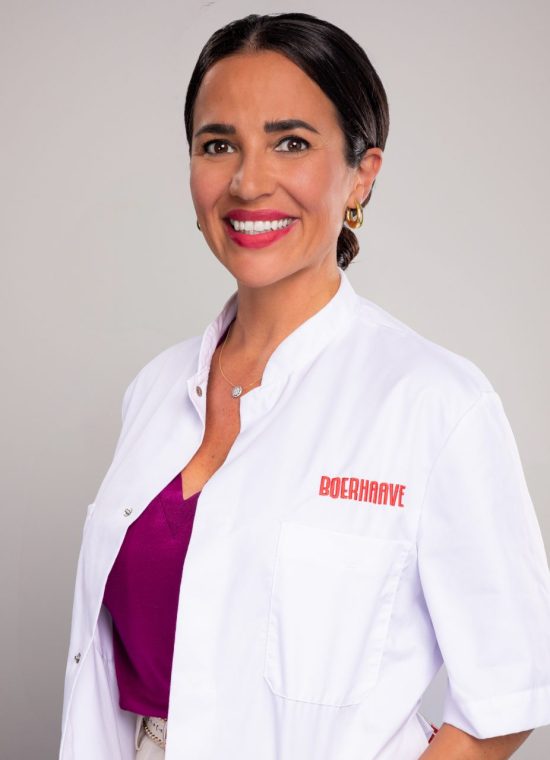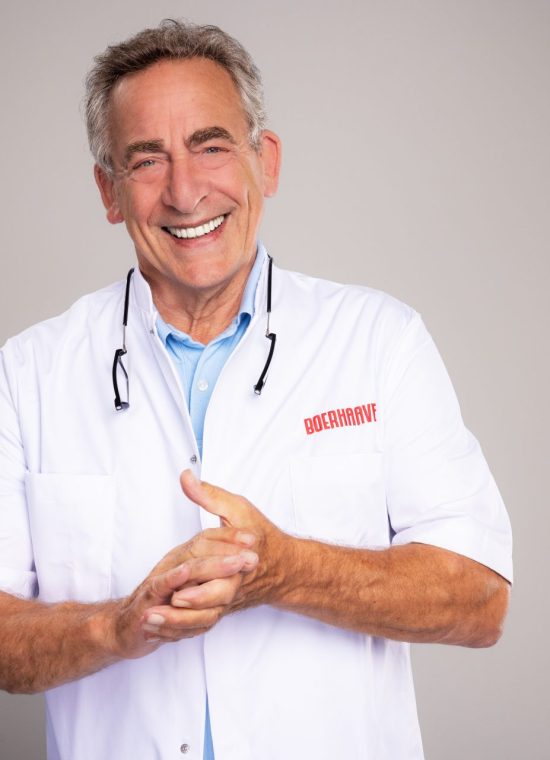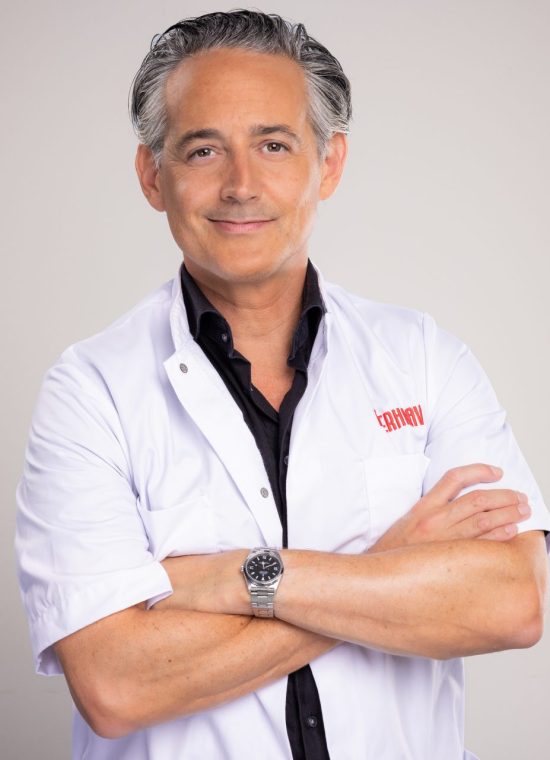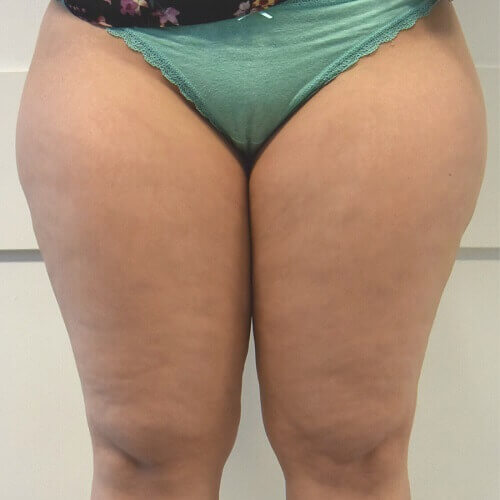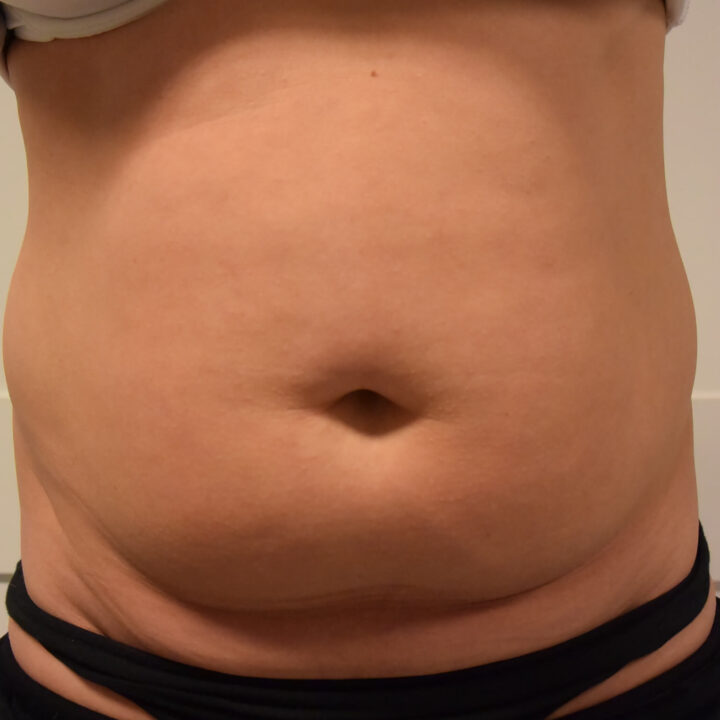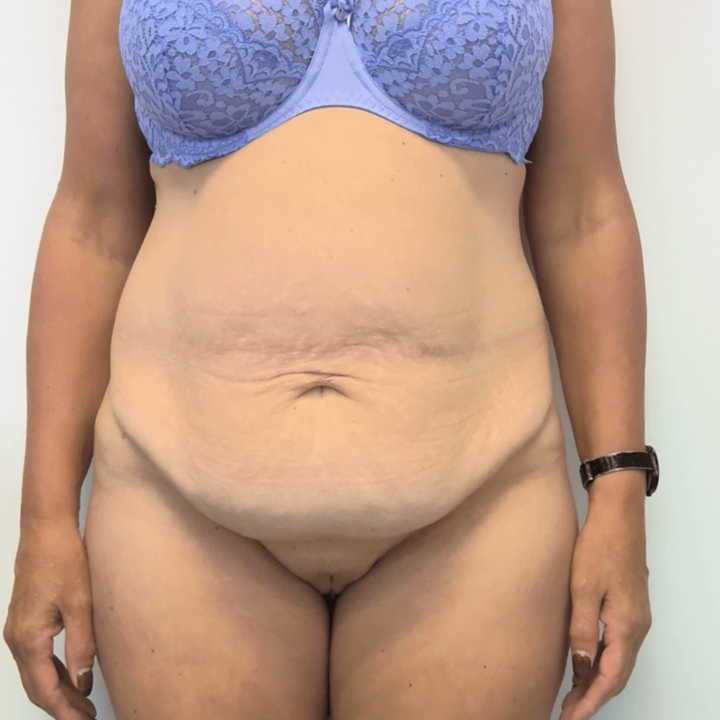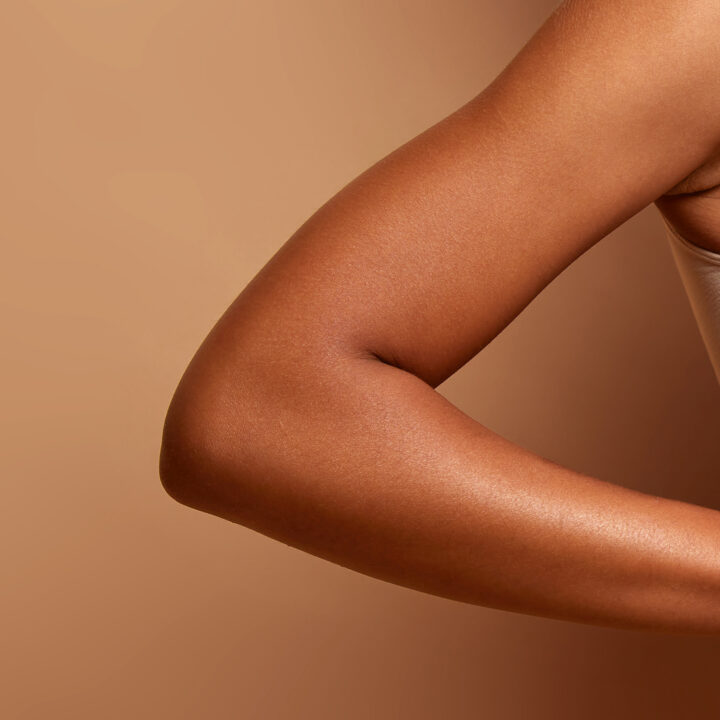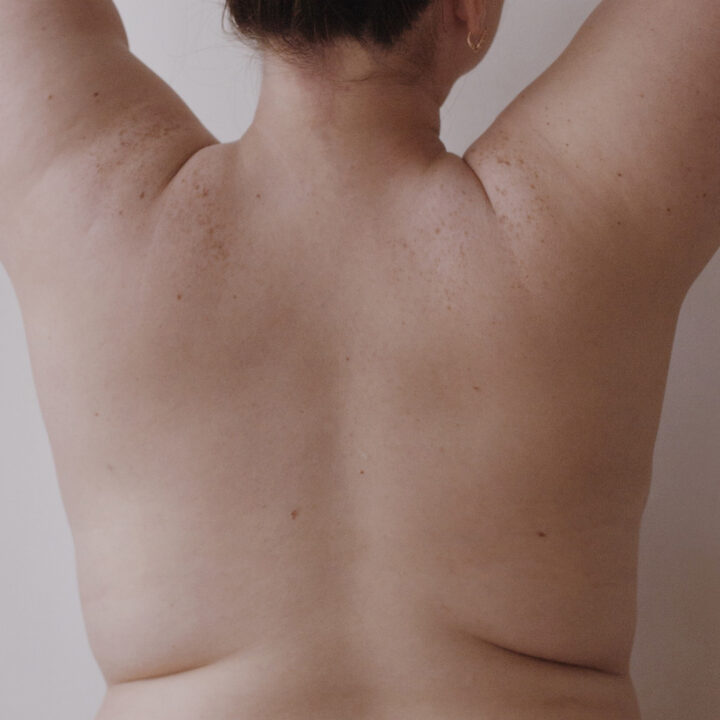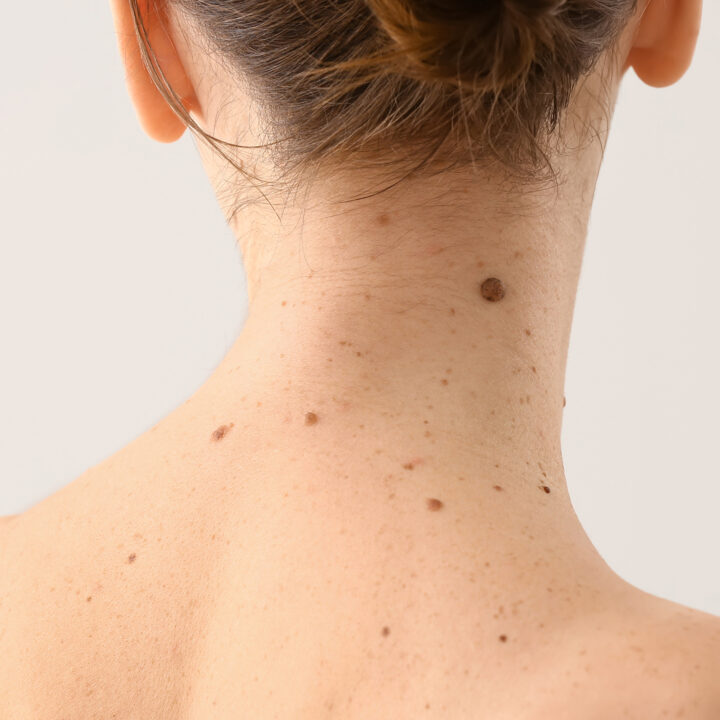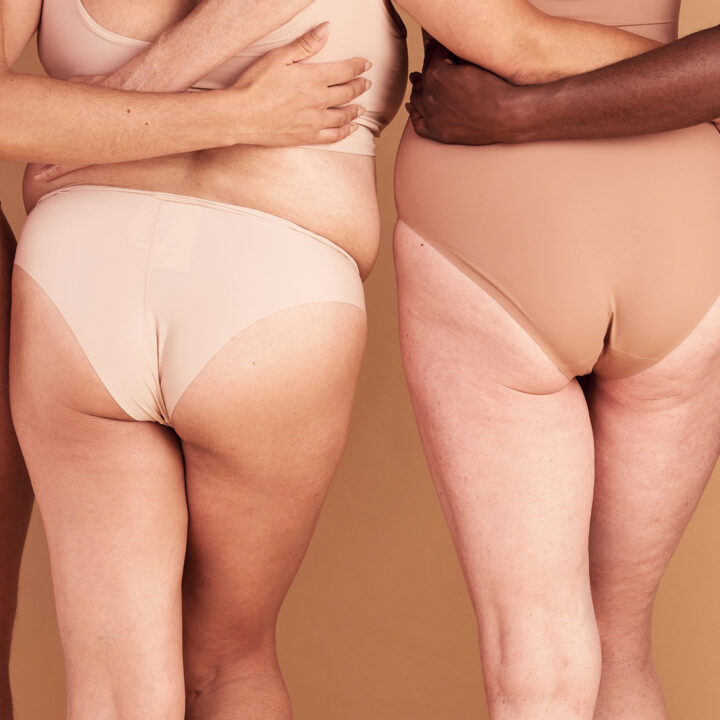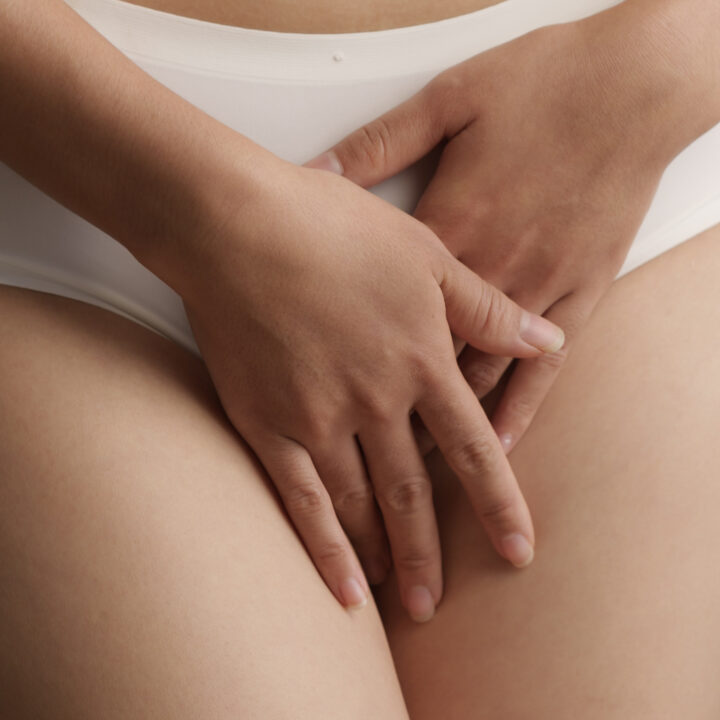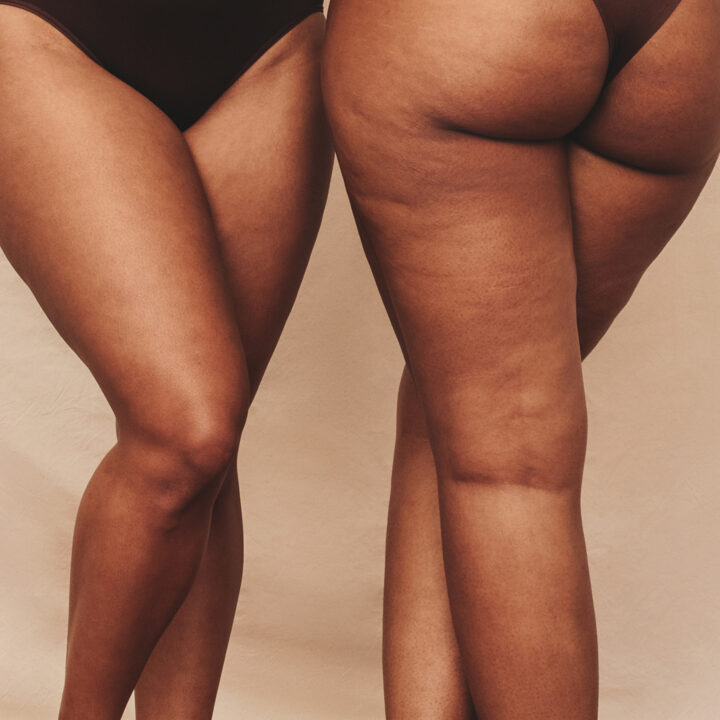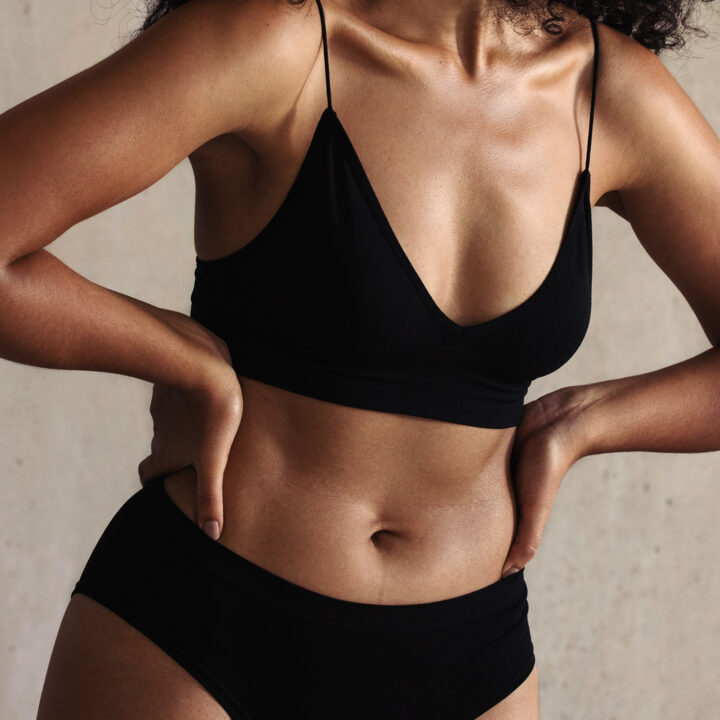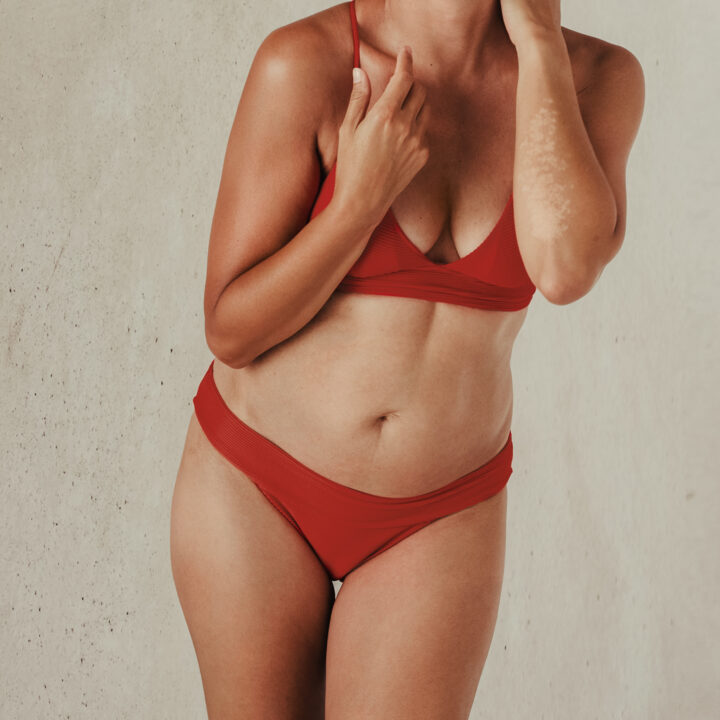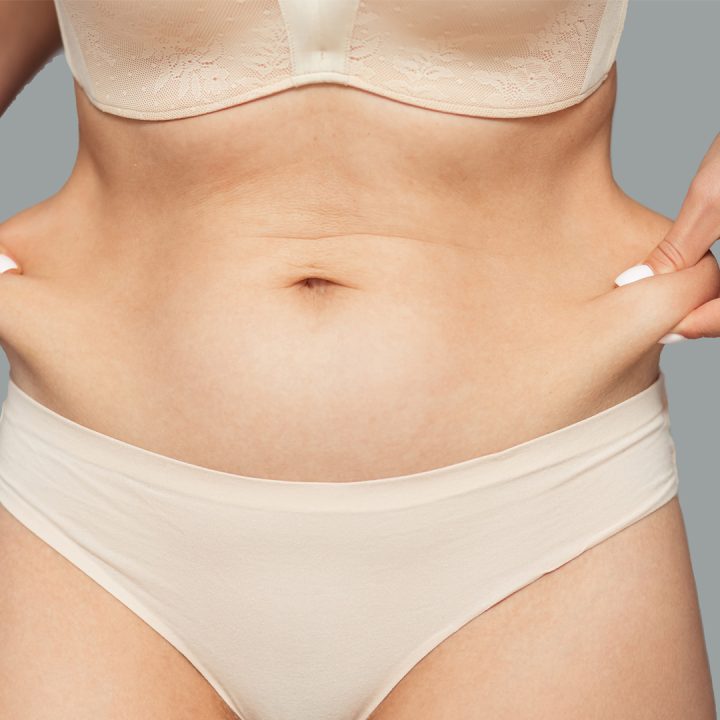Liposuction
Do you notice that certain fat deposits do not disappear, despite diet or exercise? In that case, liposuction can be an effective solution. This cosmetic procedure removes excess fat from specific areas of the body. The goal of liposuction is to improve body contours by removing fat deposits that do not respond to traditional methods such as diet or exercise. The abdomen, hips, thighs, back, arms and chin are common areas where liposuction is performed.
However, it is important to know that liposuction is not always the ideal solution for removing stubborn fat. The treatment is only suitable if you are in good health, have a stable weight (calculate here your BMI), and your skin has sufficient elasticity. You can elasticity of the skin test by grabbing it; if the skin springs back quickly when you let go, it is elastic. If this takes a little longer, the skin is less elastic.
Although liposuction is effective for fat removal, it alone cannot significantly tighten the skin. Here comes Renovation in handy. Renuvion is a treatment that focuses on tightening the skin. A unique combination of cold helium plasma and radio frequency energy are used to tighten the skin from within.
This technology is specifically designed to heat the underlying tissues while keeping the surrounding areas cool, resulting in less recovery time and fewer risks compared to traditional skin tightening methods. By applying Renuvion immediately after liposuction, the doctor can tighten the skin in the areas where fat has been removed, leading to a smoother and more defined body contour.
Another solution would be a tummy tuck can be. Liposuction is ideal for fat removal in small to medium sized areas, while a tummy tuck is more suitable for those with significant excess skin, often following weight loss or pregnancy.
For liposuction, the choice between local and general anesthesia may depend on several factors, including the extent of the procedure, the areas to be treated, the patient’s personal preference, and the doctor’s recommendation. Read here more about general anesthesia.
Scroll down for more information about the liposuction treatment. You can also request a free consultation schedule .
What does the liposuction cost
Discount for combination of areas
01 More information
What is Liposuction? Liposuction is a cosmetic procedure that removes excess fat from specific areas of the body. The procedure focuses on improving body contours by removing stubborn fat deposits that do not respond to diet or exercise. Common areas that liposuction is performed on include the abdomen, hips, thighs, back, arms, and chin. How does Liposuction work?
- Fat removal : A thin tube, called a cannula, is inserted through small incisions. This cannula sucks away the excess fatty tissue.
- Anesthesia : The procedure can be performed under local or general anesthesia, depending on the size of the area being treated.
- Recovery time : After the procedure there is a recovery period during which swelling and bruising may occur. The result is usually not fully visible until after several weeks.
When are you eligible for Liposuction?
- You are healthy and have a stable weight. Do you want to know if you have a healthy weight? Calculate here your BMI.
- You have specific areas of stubborn fat that do not respond to diet or exercise.
- Your skin has enough elasticity to adapt to the new contours after fat removal.
- You have realistic expectations of the results.
Although liposuction is effective for fat removal, it alone cannot significantly tighten the skin. Here comes Renovation in handy. Renuvion is a treatment that focuses on tightening the skin. A unique combination of cold helium plasma and radio frequency energy are used to tighten the skin from within. This technology is specifically designed to heat the underlying tissues while keeping the surrounding areas cool, resulting in less downtime and fewer risks compared to traditional skin tightening methods. By applying Renuvion immediately after liposuction, the doctor can tighten the skin in the areas where fat has been removed, resulting in a smoother, more defined body contour. When is liposuction not a solution?
- You want to lose a significant amount of weight; liposuction is not a solution for obesity.
- You have poor skin elasticity, which can lead to loose skin after the procedure.
- You have serious medical conditions that could impede healing.
- You are pregnant or planning to become pregnant in the near future.
Another solution would be a tummy tuck can be. Liposuction is ideal for fat removal in small to medium sized areas, while a tummy tuck is more suitable for those with significant excess skin, often following weight loss or pregnancy. Liposuction after pregnancy After a pregnancy, it can take a while for your body to return to its old weight. Especially in women who have had multiple pregnancies or have lost a lot of weight, there can be a sagging of the abdominal skin in addition to excess fat. In this case, you can combine the treatment with an abdominal wall correction to get the best result. Some women choose to combine it with a breast correction. We then speak of a: Mommy makeover , which refers to a combination of surgical procedures in women. How much does it cost? The cost of liposuction depends on the desired and number of regions. If you choose multiple locations, the price will be reduced. During a consultation, one of our plastic surgeons can give you more clarity about which region is most suitable for you. The table above gives you an indication of the possible costs. Because our specialists provide customized advice, the final price depends on the proposed treatment plan that is discussed with you during the consultation. After a no-obligation consultation with us, we can give you a price for your treatment with certainty. Possible regions
- Small areas: Local anesthesia is often used for liposuction of smaller areas, such as the chin, neck, or small fat deposits on the abdomen or arms.
- Limited fat removal: If only a small amount of fat is removed, local anesthesia may be sufficient.
- Faster recovery time: Because you do not have to be under anesthesia, recovery time is often shorter and the risks of anesthesia are absent.
- Outpatient treatment: After treatment under local anesthesia, you can often go home the same day.
General anesthesia:
- Large areas or multiple zones: If liposuction is performed on multiple body areas (such as abdomen, back, thighs and hips), general anesthesia may be necessary to make the procedure comfortable for the patient.
- More fat removal: For larger amounts of fat removal, general anesthesia is usually safer and more comfortable, as the procedure takes longer and is more intensive.
- Recovery time: Recovery time from general anesthesia varies depending on several factors, including the length of the surgery, the patient’s health, and the complexity of the procedure. It is important to realize that recovery from the anesthesia itself is usually short, but recovery from the surgery for which the anesthesia was given may take longer.
- Outpatient treatment: After treatment under general anesthesia, you can often go home the same day.
Important considerations are the duration of the procedure, general anesthesia is often recommended if the liposuction lasts longer than 2 to 3 hours, to avoid discomfort. The comfort level of the patient, if the patient feels anxious or suffers from pain sensitivity, general anesthesia may be perceived as more comfortable. On the other hand, general anesthesia carries more risks, such as nausea, vomiting and a longer recovery time. Together with the plastic surgeon, you can discuss your wishes during a consultation and the plastic surgeon can give advice. Important : An extensive consultation always takes place prior to the procedure to determine whether liposuction is the right choice for you and to discuss any risks.
02 The consultation
Plastic surgeon The consultation always takes place with the plastic surgeon who will treat you. During this first consultation, you can indicate what bothers you most about your body and what you want to change. Together with your plastic surgeon, you will discuss your wishes and the regions in front of the mirror. Based on this, he will propose the most suitable surgical technique for you and discuss this with you. In front of the mirror, you will also be explained what this technique entails and what you can expect with regard to the end result. The plastic surgeon will then show you before and after photos of the treatments he or she has performed. This will give you an idea of the possible results. At the end, your consultation will be summarized in a treatment plan and the total costs will be discussed with you directly. This will allow you to make a well-considered decision. Would you like more information about your first consultation at Boerhaave? Read more here. Consultant Following your first consultation with your plastic surgeon, you will have a (telephone) conversation with your consultant. The purpose of this conversation is to inform you of matters that need to be arranged around your liposuction. This way, you are well prepared for your treatment. BMI When you go under anesthesia during an operation, it is important that it is safe. For that reason, you should have a healthy weight. Do you want to know if you have a healthy weight? Calculate here your BMI. The BMI (Body Mass Index) indicates whether your weight is healthy in relation to your height.
03 The treatment
On the day of your liposuction, you are expected at the clinic half an hour in advance. The exact duration of the procedure depends on the number of fat cells to be removed and the number of locations. Whether you will receive local anesthesia or general anesthesia (narcosis) also depends on this. A small liposuction can take place under local anesthesia, while a larger treatment will be carried out under anesthesia. It is possible that you will have to stay overnight at the clinic for a larger liposuction of multiple areas. Read here how a treatment day generally proceeds.
How does the procedure work? For this procedure, we use Tumescent liposculpture: one or more small incisions of approximately five millimeters are made in the skin folds, so that they are barely visible afterwards. A fluid is injected into the fatty tissue via the incision that reduces blood loss and liquefies fat. The plastic surgeon then uses fine suction needles to suck off the excess dissolved fat. After sucking off the excess fat, the incisions are carefully sutured with dissolvable sutures. Video animation about the treatment
04 Aftercare and recovery
If your treatment was performed under local anesthesia, you are often allowed to go home half an hour after the procedure. In the case of general anesthesia, you will usually stay in the clinic for another three to four hours so that your blood pressure and heart rate can be monitored. Depending on the size of the operation, you may have to stay overnight. You are only allowed to go home if the nurse and anesthetist consider it safe to do so. Was your treatment performed under anesthesia? Then you may start at home with easily digestible food, such as water, tea and rusk. Try to prevent nausea and vomiting. This reduces the chance of post-operative bleeding and/or congestion of the wound. It is also important to drink a lot. It is possible that some fluid and sometimes blood will leak from the wound holes during the first 24 hours. You do not need to worry about this. This will pass by itself. After pain After the treatment, the treated area may:
- Feeling painful and pressing
- Feeling the stock market
- Muscle pain; and a burning sensation when you start moving
In addition, fluid accumulations may occur in some places. These often disappear on their own after about two to six weeks. Recovery As after any surgical procedure, the body needs time to recover. The treated area will initially be quite swollen and the scars may be red and raised immediately after the procedure. Do not be alarmed by this. This is a natural reaction of the body. In addition, the skin around the treated area may turn blue to yellow and the skin may feel less sensitive. You will not see the direct result right away, because your skin is quite swollen and raised. The skin needs time to tighten and adapt to the new body shape. After a few weeks, the swelling will have gone away and the fluid will have disappeared. It is only after three months that it can be properly assessed whether the liposuction has been successful. The final result will only be clearly visible a year after the treatment, because your body will only have fully healed from the procedure by then. Due to your new body shape, it is often necessary to purchase new clothing. Take this into account in advance. Scar cream The scars after liposuction are not large, on average half a centimeter. The plastic surgeon does everything he can to make the scars barely visible. During your first check-up with us, you will be given a nourishing cream for the scars to take home. As soon as the wound is closed and the scabs have disappeared, you can start applying the scar cream. By applying this to the closed wound twice a day, you increase the chance of a beautiful healing. It is useful to know that a scar needs one to one and a half years to completely calm down. That is why it is important to keep your scars out of the sun and to always apply a sun factor of more than factor 30 to your skin during the first year.
05 The result
The effect of liposuction is often permanent. Fat cells that have been removed will never return. However, a thin layer of fat remains just under the skin, which is necessary for a beautiful body shape and has an important function for the skin. These remaining fat cells can become larger again due to, for example, an unhealthy diet. Exercising a lot and a good diet are therefore important for a lasting result. Our specialists take the time to tailor the wishes and advice regarding the treatment and the result to each individual. We look extensively at the contours of your body and whether these remain in balance with the treatment. Boerhaave has now helped thousands of people to a dream figure through liposuction. Curious about the results? View here the before and after photos of various liposuction treatments.
06 What are the risks and complications?
It is important that you do not forget that every surgical procedure can entail risks and complications. Plastic surgery procedures are generally performed on healthy people, which means that the risks and the chance of complications are low. By providing good information, a complete anamnesis (recording your medical history) and our professional approach, we reduce these risks to an absolute minimum. The chance of a complication occurring with liposuction is rare. In addition, you can reduce certain risks by carefully following the instructions you have been given. Possible complications may include:
- Hematoma (a collection of blood under the skin that requires removal)
- Adverse reaction to anesthesia
- Post-operative bleeding
- Infection
- Change of feeling
- Permanently visible scars
- Damage to underlying structures
- Unsatisfactory aesthetic result
- Irregularities
- Sagging skin after liposuction
Smoking Patients who smoke or use tobacco or nicotine products at the time of surgery have a higher risk of complications, such as skin necrosis and poorer wound healing. In addition, it can have a negative effect on the anesthesia, possibly resulting in an increased risk of bleeding. It is important not to smoke for at least four weeks before the procedure and to continue to do so throughout the entire recovery process. It is important to know that people who are exposed to passive smoking may also have an increased risk of similar complications. People who are not exposed to tobacco smoke or nicotine-containing products have a significantly lower risk of complications.
More information
Plan your appointment now in our agenda or let us call you back.
